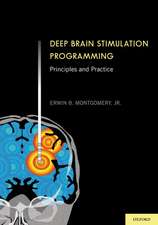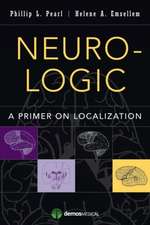The Dynamic Brain: An Exploration of Neuronal Variability and its Functional Significance
Editat de Dennis Glanzman, PhD, Mingzhou Ding, PhDen Limba Engleză Hardback – 3 feb 2011
Preț: 950.51 lei
Preț vechi: 1310.05 lei
-27% Nou
Puncte Express: 1426
Preț estimativ în valută:
181.94€ • 197.69$ • 152.93£
181.94€ • 197.69$ • 152.93£
Carte tipărită la comandă
Livrare economică 09-15 aprilie
Preluare comenzi: 021 569.72.76
Specificații
ISBN-13: 9780195393798
ISBN-10: 0195393791
Pagini: 392
Ilustrații: 162 illustrations
Dimensiuni: 236 x 160 x 25 mm
Greutate: 0.92 kg
Editura: Oxford University Press
Colecția OUP USA
Locul publicării:New York, United States
ISBN-10: 0195393791
Pagini: 392
Ilustrații: 162 illustrations
Dimensiuni: 236 x 160 x 25 mm
Greutate: 0.92 kg
Editura: Oxford University Press
Colecția OUP USA
Locul publicării:New York, United States
Notă biografică
Dennis Glanzman is Chief of the Theoretical and Computational Neuroscience Research Program at the National Institute of Mental Health, where he oversees a portfolio focused on the development and application of realistic models for the analysis and understanding of brain function. He was co-organizer of the joint NIH-NSF "Collaborative Research in Computational Neuroscience" Program which supports innovative interdisciplinary collaborative research to make significant advances in the understanding of nervous system function, mechanisms underlying nervous system disorders, and computational strategies used by the nervous system. Mingzhou Ding is J. Crayton Pruitt Family Professor in the Department of Biomedical Engineering at the University of Florida. His past work dealt with nonlinear dynamical systems and stochastic processes. Currently, he is interested in cognitive neuroscience and related computational and signal processing problems.





















